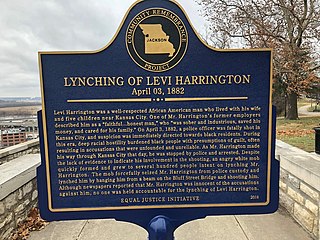Suicide by cop or suicide by police is a suicide method in which a suicidal individual deliberately behaves in a threatening manner, with intent to provoke a lethal response from a public safety or law enforcement officer to end their own life.
Michael M. Baden is an American physician and board-certified forensic pathologist known for his work investigating high-profile deaths and as the host of HBO's Autopsy. Baden was the chief medical examiner of the City of New York from 1978 to 1979. He was also chairman of the House Select Committee on Assassinations' Forensic Pathology Panel that investigated the assassination of John F. Kennedy. Baden's independent autopsy findings are often in conflict with the local authorities' opinions.

Herbert Richard Baumeister was an American businessman and suspected serial killer. A resident of the Indianapolis suburb of Westfield, Indiana, Baumeister was under investigation for murdering over a dozen men in the early 1990s, most of whom were last seen at gay bars. Police found the remains of eleven men, eight identified, on Baumeister's property. Baumeister committed suicide after a warrant was issued for his arrest. He was later linked to a series of murders of at least twelve men along Interstate 70, which occurred in the early to mid-1980s.
Murder of pregnant women is a type of homicide, often resulting from domestic violence. Domestic violence—or intimate partner violence (IPV)—is suffered by many, and when analyzing cases in which victims came forward, men are more likely than women to commit acts of severe domestic battery, and women are more likely to suffer serious injury as a result. Many of these women fear harm not just to themselves but also to their unborn children. Recently, more focus has been placed on pregnancy-associated deaths due to violence. IPV may begin when the victim becomes pregnant. Research has shown that abuse while pregnant is a red flag for pregnancy-associated homicide.
Nireah Johnson was an African American trans woman who was murdered in Indianapolis, Indiana along with her friend Brandie Coleman, by Paul Moore, after Moore discovered that Johnson was transgender.
The Burger Chef murders took place at a Burger Chef restaurant in Speedway, Indiana, United States, on the night of Friday, November 17, 1978. Four young employees went missing in what was initially thought to be a petty theft of cash from the restaurant's safe. By Saturday morning it became a clear case of robbery-kidnapping, and by Sunday, when their bodies were discovered, a case of murder. While investigators believe they have identified some or all of the perpetrators, without physical evidence they have not been able to prosecute those who remain alive.
The Indianapolis Recorder is an American weekly newspaper based in Indianapolis, Indiana. First published in 1895, the Recorder is the longest-running African-American newspaper in Indiana and fourth in the U.S.

William Edwin "Bill" Sparkman, Jr. was an American schoolteacher and Field Representative for the United States Census Bureau found dead in September 2009 under suspicious circumstances. After more than two months of investigation, police concluded that his death was a suicide, staged by him to look like a homicide, so that his family could collect life insurance.
The following outline is provided as an overview of and topical guide to death:

The Coroner of New York City issued death certificates and performed autopsies and inquests for New York County, New York, for all homicides, suicides and accidental deaths and any suspicious deaths.

On February 14, 2017, the bodies of Abigail Williams and Liberty German were discovered near the Monon High Bridge Trail, part of the Delphi Historic Trails in Delphi, Indiana, United States, after the girls had disappeared from that trail the previous day. The murders have received extensive media coverage, including reports that video and audio recordings of an individual believed to be their killer were found on German's smartphone.

Levi Harrington was a young African-American who, on April 3, 1882, was abducted from police custody by a large white mob of several hundred participants and lynched in Kansas City, Missouri, hanged from a beam on the Bluff Street Bridge and shot. This followed the fatal shooting of a police officer, Patrick Jones, earlier that day. The next day another man, George Grant, was accused of the crime, and Harrington was declared innocent. However, the evidence against Grant was so weak that he was reportedly tried and acquitted three times and accepted a 2-year prison sentence in a plea bargain on the fourth trial.

The Newberry Six lynchings took place in Newberry, Alachua County, Florida, on August 18, 1916.
Elmore County is a county located in the east-central portion of the U.S. state of Alabama. Throughout its history, there have been many lynchings in the county including on July 2, 1901, when a local mob lynched Robert White. In a strange turn of events, a local farmer, George White confessed in court to the killing and named five other local men as killers. Three men were convicted in the killing and sentenced to ten years in prison. On 9 June 1902, they were pardoned by Governor Jelks.

On April 15, 2021, a mass shooting occurred at a FedEx Ground facility in Indianapolis, Indiana, United States. Nine people were killed, including the gunman, 19-year-old former employee Brandon Scott Hole, who committed suicide. Seven others were injured, including four by gunfire. It is the deadliest mass shooting in the history of Indiana.
The I-70 Strangler is the nickname of an unidentified American serial killer who killed at least 12 boys and men in Indiana and Ohio between June 1980 and October 1991, dumping their bodies near Interstate 70 (I-70). Though officially unsolved, it is believed that deceased serial killer Herb Baumeister might have been the perpetrator.

Will Jones was an African-American man who was lynched in Ellaville, Schley County, Georgia by a white mob on February 13, 1922. According to the United States Senate Committee on the Judiciary it was the 13th of 61 lynchings during 1922 in the United States.

A mob of white Vigo County, Indiana residents lynched George Ward, a black man, on February 26, 1901 in Terre Haute, Indiana, for the suspected murder of a white woman. An example of a spectacle lynching, the event was public in nature and drew a crowd of over 1,000 white participants. Ward was dragged from a jail cell in broad daylight, struck in the back of the head with a sledgehammer, hanged from a bridge, and burned. His toes and the hobnails from his boots were collected as souvenirs. A grand jury was convened but no one was ever charged with the murder of Ward. It is the only known lynching in Vigo County. The lynching was memorialized 120 years later with a historical marker and ceremony.
The Indianapolis Community Food Access Coalition (ICFAC) is a commitment by the city of Indianapolis, Indiana, to prioritize policies and activities to ensure affordable and equitable access to healthy and nutritious food for all residents. The Coalition was created through an Indianapolis Ordinance 337 in November 2020.









